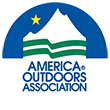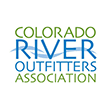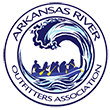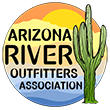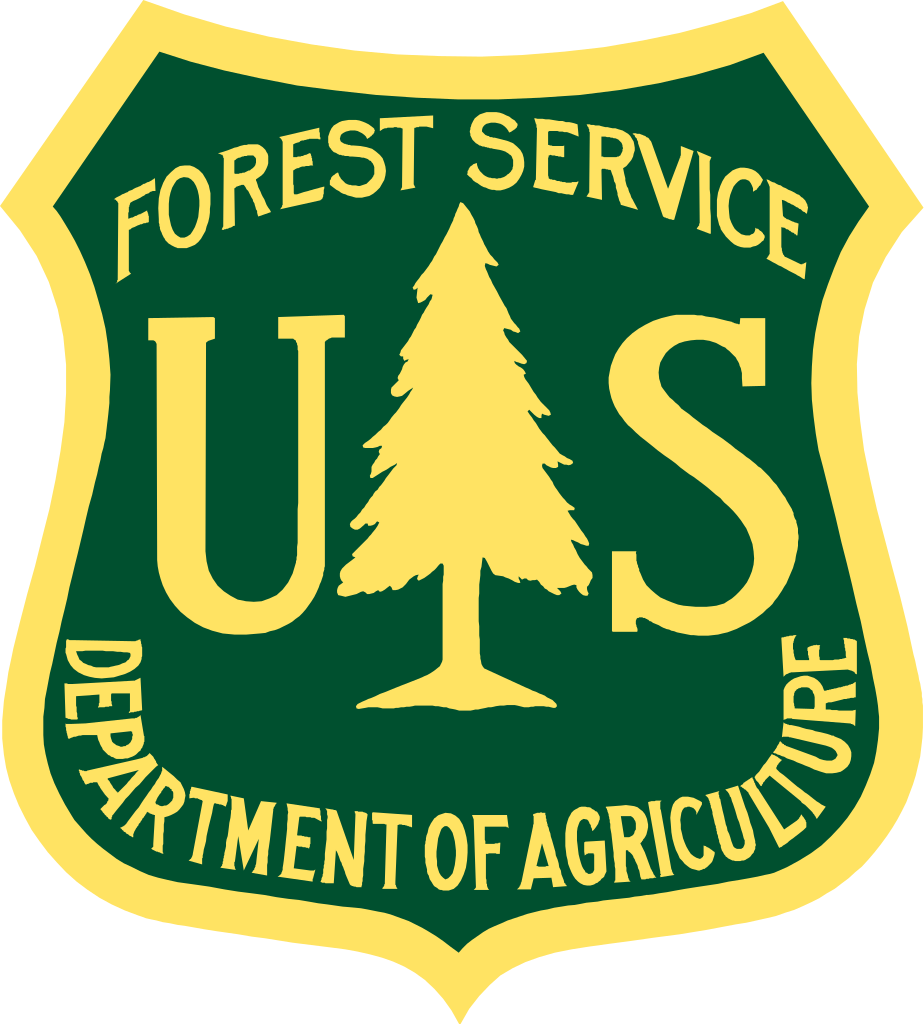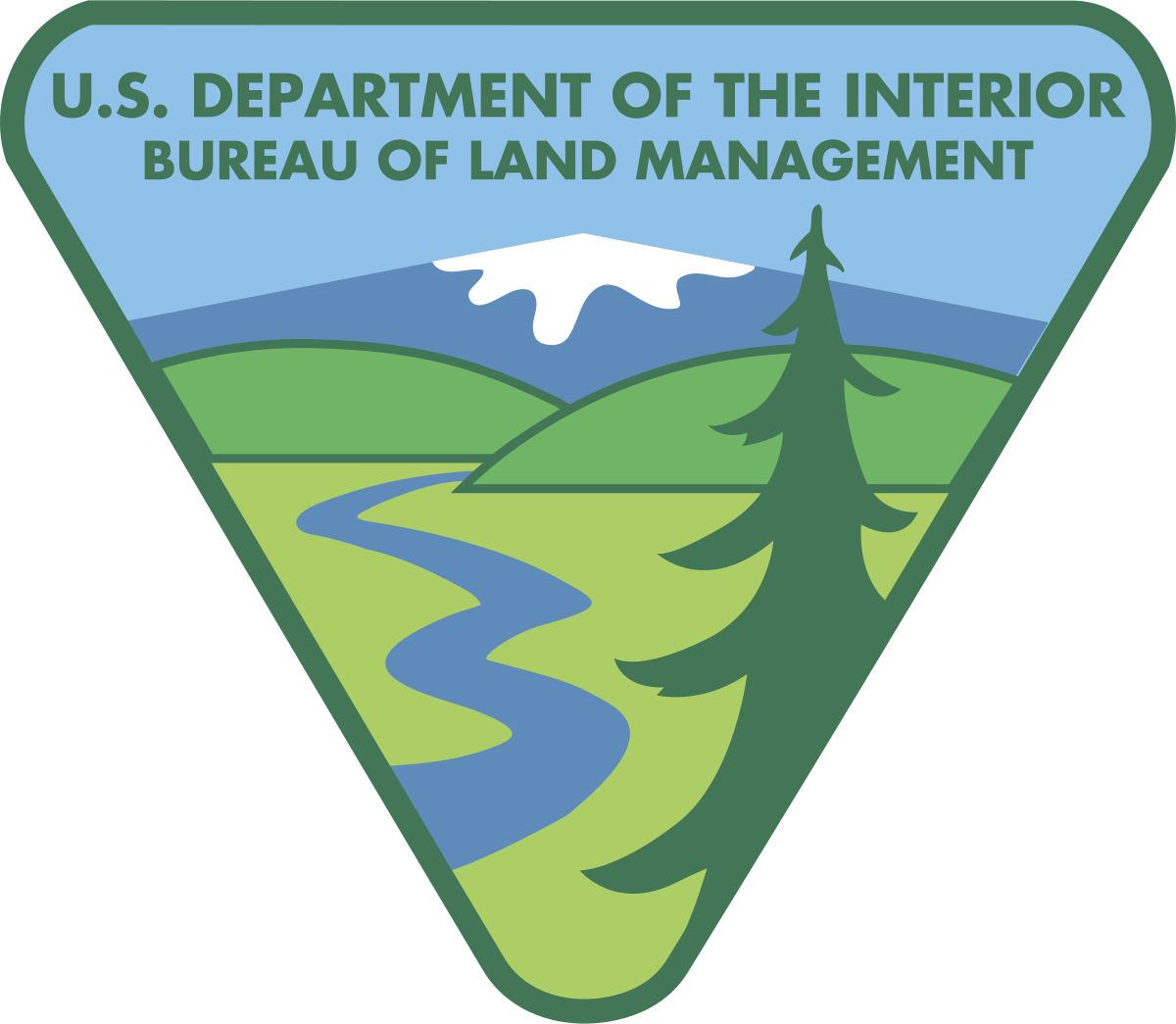Rio Marañon #1: The Plane Ride to the Put-in at Chagual
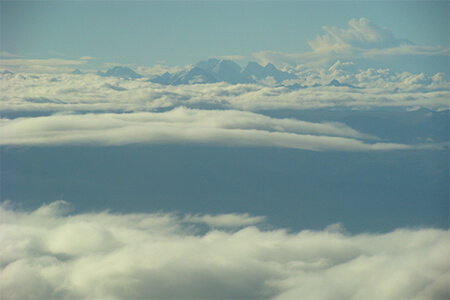
It was still dark when the alarm began to buzz. But I was already awake. My excitement for the day ahead had make it hard to sleep. I jumped out of bed and was dressed in minutes. Joe knocked on the boys’ door, next to ours in the Hostel Colonial in Trujillo, Peru, and they were already up, too: our two boys, Ben and Ethan, joining us for their winter break from college, and their college friend, Will. It wasn’t long until we were climbing into our pre-arranged taxi outside the hostel, and driving through the dark to the Trujillo airport. When we arrived, we were the first ones there—even before the airport workers! Ah, well. Better than being late.We set up camp on the few chairs along the hallway, next to the ticket counter for domestic flights, which consisted of two airlines. Larry, a trauma surgeon and river rafter in his sixties arrived a few minutes later. He had been struggling to get to Peru for nearly a week, fighting cancelled flights and lost luggage due to a LAN airlines strike. Another member of our group, Glenn, had also lost his luggage because of the LAN strike. Glenn, Jane, Chris, and Hal had gone to the river put-in by truck yesterday with our Peruvian guides, Pedro and Freddy, to begin the rigging for the trip. Glenn had pieced together enough borrowed gear to get by for our 14-day trip, but it had been a big distraction and stressor for him. Larry, fortunately, had received Glenn’s luggage at his hostel at 1:00am the night before, so we celebrated how happy Glenn was going to be when we arrived at the put in with his gear. Less fortunate was Larry himself, whose luggage was now lost, as well. Soon the other three members of our group, Steve, Rachel and The Dude, arrived at the airport, and after hugs and greetings, we got in line at the ticket counter. SierraRios had arranged our flight to Chagual, near the put in for the Grand Canyon section of the Rio Marañon. The original plan was for our group of nine to fly in together on the first flight of the morning. But by the time we realized we needed to get in line at the ticket counter, there were already five local people in line ahead of us. As a result, we had to split our group into two flights. We four Greiners took the first flight with half of Glenn’s luggage, and the other five would take the second flight one hour later with the rest of Glenn’s gear.The plane took off smoothly into the morning coastal clouds, which we broke through in short order, and then we banked toward the Andes, which towered to the east. The little plane was as full as it could be and labored higher and higher as the mountains loomed close. We cleared the first range with at least a thousand feet to spare, and climbed for about another 10-15 minutes as we soared over range after range, many mostly obscured by clouds. Jagged peaks poked out of cottony cloud banks in the distance. Shades of blue and gray and white and shadow surrounded us, with occasional green and brown when the sun managed to reach through the clouds to the ground. And then the descent began. The clouds loomed closer and closer and then we were inside them. All those mountains all around but we couldn’t see a thing! I fervently hoped the pilot had a very good sense of where he was. A few tense moments later, we broke through the clouds and got our first view of the Rio Marañon, stretching out below. We were already in the canyon, still high, but dropping steadily. The little plane floated smoothly, not a bobble. But my heart pounded. In the next few minutes our little plane would execute what was reported to be one of the most dangerous approaches and landings in the world. Gulp. And yet, my heart soared, too. It was beautiful. Stark, desert beauty, for there is no jungle this far up the river drainage. Steep brown and blue-green slopes and crags surrounded a wide brown river dotted by large sand bars. We dropped still more. Then the plane banked into a smooth, wide turn, straight toward a sloping mountain. We soared close over the top of it, still banking until 360 degrees had been achieved, then leveling out. We could feel the engine slowing still more…and then the decisive drop toward the runway, which had just magically appeared in front of us—right in front of us. Mountains to either side, cross the river, and there began the impossibly short runway. And yet, the pilot brought the plane down smoothly, with barely a bump, and slowed to a serene stop before the embankment that signaled the runway’s end. Wow! What a thrill, and yet, what a gorgeous trip. And here we were, at the river. We had been warned about the no-see-um gnats in this river canyon: that we wouldn’t feel them biting, but we would get red welts. Being particularly susceptible to swelling and itching from such bites, I made sure I was covered from head to foot with permethrin (insect repellent)-coated clothing, including socks, gloves and bandana. The others sprayed themselves with DEET within minutes of our exit from the plane. We hung out by the tarmac for a few minutes. The temperature was pleasant and a thin layer of cloud helped keep the equatorial sun from feeling too hot. A few minutes later a black pickup truck pulled up and the driver said he was our ride to the put-in. Never mind that we had never seen the man before and that we were in the middle of nowhere. We clambered aboard and he drove us up a dirt road for a couple of miles, where the river and a colorful array of boats and river gear lay splayed
Hidden Jewel: Rafting Peru’s Rio Marañon, the Primary Source of the Amazon
[vc_row][vc_column][vc_column_text css=”.vc_custom_1516920280751{margin-bottom: 0px !important;}”]This 10-part series documents a two week trip down the Rio Marañon that Wilderness Aware’s owners, Joe and Sue Greiner, their two sons, and nine friends took from December 22, 2015 through January 4, 2016. The Rio Marañon is the primary source by volume of the mighty Amazon River. It starts high in the Peruvian Andes and flows down through a desert canyon that has been dubbed by river enthusiasts “The Grand Canyon of the Marañon”. It is the longest free-flowing river in the world. However, 20 proposed dam projects may destroy this amazing river, its ecosystems, and would displace the Peruvian villagers who have long called its shores home. Written by Sue Greiner, this blog series documents our trip, and shines a light on this spectacular river in the hopes of raising awareness about the Rio Marañon so that it can be saved for Peru and the world. Join our adventure of a lifetime by following our blog series, which will post every week from March through mid-May, 2016. To raft and/or help protect the Rio Marañon, contact SierraRios at sierrarios.org.[/vc_column_text][/vc_column][/vc_row][vc_row][vc_column width=”1/3″][vc_column_text css=”.vc_custom_1516920862337{margin-bottom: 0px !important;}”] Rio Marañon #1: The Plane Ride to the Put-in at Chagual It was still dark when the alarm began to buzz. But I was already awake. My excite… [/vc_column_text][/vc_column][vc_column width=”1/3″][vc_column_text css=”.vc_custom_1516921764590{margin-bottom: 0px !important;}”] Rio Marañon #2: Near Disaster at the Start Rigging with unfamiliar equipment takes a while. But 12 out of 13 of our group… [/vc_column_text][/vc_column][vc_column width=”1/3″][vc_column_text css=”.vc_custom_1516922254962{margin-bottom: 0px !important;}”] Rio Marañon #3: Christmas Day Our trip on the Rio Marañon was over Christmas break so that our college student kids… [/vc_column_text][/vc_column][/vc_row][vc_row][vc_column width=”1/3″][vc_column_text css=”.vc_custom_1516920923605{margin-bottom: 0px !important;}”] Rio Marañon #4: Buying a Paddle Joe and the boys and I have a tradition that started on our first overseas trip as a family… [/vc_column_text][/vc_column][vc_column width=”1/3″][vc_column_text css=”.vc_custom_1516920938470{margin-bottom: 0px !important;}”] Rio Marañon #5: Rapids and Eddies A truly free flowing river has a unique character. Those of us from the United States… [/vc_column_text][/vc_column][vc_column width=”1/3″][vc_column_text css=”.vc_custom_1516920956968{margin-bottom: 0px !important;}”] Rio Marañon #6: Tupén Grande We had spent the first half of the day blasting through huge standing waves in rapid after rapid… [/vc_column_text][/vc_column][/vc_row][vc_row][vc_column width=”1/3″][vc_column_text css=”.vc_custom_1516920975209{margin-bottom: 0px !important;}”] Rio Marañon #7: The Pachamanca We hiked from our camp on the beach back to the village at Tupén Grande for the evening… [/vc_column_text][/vc_column][vc_column width=”1/3″][vc_column_text css=”.vc_custom_1516920988946{margin-bottom: 0px !important;}”] Rio Marañon #8: Pools and Waterfalls The river was coming up again. The morning we left Tupén Grande the water… [/vc_column_text][/vc_column][vc_column width=”1/3″][vc_column_text css=”.vc_custom_1516921007835{margin-bottom: 0px !important;}”] Rio Marañon #9: The Jungle and Tutumberos January 1, 2016 was our last day in the Grand Canyon of the Marañon. The original plan was… [/vc_column_text][/vc_column][/vc_row][vc_row][vc_column width=”1/3″][vc_column_text css=”.vc_custom_1516921047301{margin-bottom: 0px !important;}”] Rio Marañon #10: Dams and Regrets Mid-morning on New Year’s Day, we arrived at Amazon Cavern, which is reminiscent of… [/vc_column_text][/vc_column][vc_column width=”1/3″][/vc_column][vc_column width=”1/3″][/vc_column][/vc_row]
Going Green: Wilderness Aware Rafting Is the Only 100% Renewable Energy Powered Rafting Outfitter in the Arkansas River Valley
Today marks the day where Wilderness Aware Rafting’s commitment to renewable energy has gone full throttle. We’ve always championed the green movement; in 2008 we were the first green rafting company in Colorado to incorporate renewable energy into our power grid. We’re excited to announce the installation of this solar panel now enables us to supply all of our energy needs via solar and wind power. Our 17 acre headquarters, Colorado’s 300 days of sunshine, and the increase in wind levels during the rafting off-season make for the ideal infrastructure to support our green energy initiative. We decided to tap into this alternative source of energy to help eliminate our carbon footprint, take advantage of the great savings renewable energy offers, and do our part in supporting American energy independence. You don’t need to make huge changes like we did to do your part. Here is a list of 10 easy ways you can have a direct impact on helping our environment: Bring your own mug or tumbler to the coffee shop. We all have a mug or two laying around the house and oftentimes coffee shops will offer a special discount for customers using their own containers for their beverages! Unplug your chargers when they are not in use. Even when they aren’t powering your devices, chargers continue pulling electricity. Make it a habit to turn lights off when you’re leaving a room. Invest in a reusable water bottle and bring it with you everywhere. We have some great ones for sale so you can get a souvenir from your whitewater rafting trip that’s both fun and functional! Invest in a variety of reusable containers for packing your lunch to work or school rather than using disposable ziplock bags. Start composting. Rather than filling a landfill, your food scraps will provide much-needed nutrients to your garden. Shop local. Your typical produce travels approximately 1,500 miles before finding a spot on your plate. Buying local products ensures you’re getting the freshest foods and reduces fossil fuel consumption and carbon emissions. Plant a tree. Trees have an amazing impact, a single tree absorbs one ton of carbon dioxide in its lifespan. Recycle clothing and gear you’re no longer using. At Wilderness Aware Rafting, we offer gently used whitewater rafting equipment at a great price. Buying second-hand items prevents them from ending up in the dump, and saves you some green too. Play outside! Activities like whitewater rafting are great because they get you away from being entertained by electronics and the exposure to nature is a wonderful reminder why it’s important to all do our part helping our planet.
Browns Canyon National Monument Ceremony
Last weekend was very special for the Colorado whitewater rafting community and all other outdoors enthusiasts. Buena Vista was honored to host Secretary of the Interior Sally Jewell, Colorado Governor John W. Hickenlooper, US Congresswoman Diana DeGette, US Senator Michael Bennet, Sierra Club Director Aaron Mair, Colorado Senator Kerry Donovan, Bureau of Land Management Director Neil Kornze, and Forest Service Director Tom Tidwell, and many other friends of Browns Canyon as we all came together to celebrate the designation of Browns Canyon as an official National Monument. The designation came into play earlier this year on February 19th when President Obama signed the Antiquities Act. However, the process to make this happen started decades ago in 1991 when Representatives Wayne Allard and Dan Schaefer proposed protecting this beautiful portion of the Arkansas River Valley and its wildlife in The Colorado Wilderness Act of 1991. Despite not getting passed in Congress session after session, Colorado lawmakers and our local community did not give up the effort to protect Browns Canyon. Organizations like Friends of Browns Canyon were started with the mission of educating all on the importance of preserving this gorgeous rugged stretch of nature. We’re proud to say Joe Greiner, owner of Wilderness Aware Rafting, played a role in the efforts to earn the National Monument designation. Joe traveled to Washington D.C. and spoke with Congress about the significance of Browns Canyon and the profound positive impact the National Monument designation would have for the whitewater rafting industry and on the Arkansas River Valley area in the immediate future and for generations to come. The celebration started with a special rafting trip hosted by the Arkansas Headwaters Recreation Area and other agencies. Secretary of the Interior Sally Jewell, Colorado Governor John W. Hickenlooper, Congresswoman Diana DeGette, Senator Michael Bennet, Sierra Club Director Aaron Mair, Senator Kerry Donovan, Bureau of Land Management Director Neil Kornze, and Forest Service Director Tom Tidwell joined our owner Joe as they floated down the Arkansas River through Browns Canyon National Monument. They took on some hot action whitewater, paddling through class III and IV rapids like Zoom Flume, Pinball, and Raft Ripper. (If you’re interested in doing that same trip here’s the info: Browns Canyon Half Day) Gratitude and the sense of accomplishment radiated throughout the audience on Saturday’s ceremony in Buena Vista. Many were local Chafee County community members, but we also had guests from far and wide join us. Since the celebration coincided with Latino Conservation week, The Hispanic Access Foundation and the Sierra Club collaborated to charter buses from Denver bringing youth from ELK, Environmental Learning for Kids, to the event. ELK is a non-profit organization dedicated to developing inspired and responsible leaders through science education and outdoor experiences for underserved, urban youth. One of the recurring themes in all the speeches was the idea that we are borrowing land from future generations. Because of this, we must be responsible stewards of the land, keeping it out of harms way so our children’s children also have the opportunity to appreciate the beauty of Browns Canyon National Monument. We had quite the mix of speakers including Aaron Mair, director of the Sierra Club, who was especially adamant on reminding us all that this was just the beginning of a long movement to preserve the millions of other acres of our heritage that are still unprotected. For us personally at Wilderness Aware Rafting, the new National Monument designation is a great honor. We are hosting a visitor center so we can educate others who are looking to raft, camp, fish, hike, or even horseback ride in Browns Canyon National Monument. We have taken guests for memorable whitewater rafting adventures through Browns Canyon for summer after summer Browns Canyon has included our most popular trips. We’ve known how special this area is for decades, but now that we have the national recognition for it, we hope this inspires more visitors to make the trip to Buena Vista and experience the amazing beauty of Browns Canyon National Monument the best way possible—in a raft!
Spend Your Honeymoon in the Wilderness
If you’re planning your honeymoon and not really interested in a typical one on the beach, then consider a week in the wilderness instead. An unconventional honeymoon is memorable and unique compared to the traditional trip to paradise. It’s actually more like a fairy tale waking up in the woods and exploring the outdoors like our Once Upon a Time friends. After all the work spent planning a wedding, take it easy while an outdoor adventure company organizes the trips for you. Not only is it budget-friendly but wilderness honeymoons provide personal experiences you’ll never forget. Multi-Day White Water Rafting If you and your beau are thrill seekers, a multi-day rafting trip is for you. We offer tent camping or inn-to-inn trips. Imagine having a continental breakfast in the mountains, spending a half day on the river and taking in the beautiful scenery around you, then going horseback riding or mountain biking afterwards. If you are staying inn-to-inn, dinner will be at a local restaurant and if you are in a tent, our guides will cook gourmet meals for you. The next couple days will be full days on the river and evenings walking in downtown Salida or under the stars around a campfire. We provide professional photography during your trip so you don’t miss those special moments. Just can pick up your picture cd on your last day with us. Rafting Packages Interested in spending more time away from people and more time together? We have one and two day rafting packages for people to do a half day of rafting and another activity. Paddle-N-Saddle tours offer half or full day rafting and a horseback trip. Raft-N- Zip is for those wanting more adrenaline rushes with our zip lining tour. Love mountain biking? Then the Paddle-N-Peddle is just for you and your love. These shorter packages offer a day of fun during your honeymoon with the freedom to spend the rest of your week with hikes, fishing, camping, and more. Let us help you start planning your honeymoon in the wilderness today. Contact us or Request a Brochure for more information on white water rafting and our other adventures.
Zip-Lining for Family Get Togethers
When relatives come to visit you, there’s a moment of panic of what you’re going to take them to do during their stay but also of excitement and an excuse to get out there to explore. While shopping and eating out are fun, those events tend to blur together over time. If you want your loved ones to remember you as, “Awesome Aunt Mary,” or “Best-Cousin-Ever Rick,” then thinking outside the box will get you on a quick route there. Don’t worry, we’ve got you covered. With humans, the act of exploring together through journeys is one of the common ways that people bond. Think about family vacations, you go somewhere new together and explore with the intent of finding joy in the unknown and making memories. So go ahead, take a vacation day or two from work and bring your relatives zip-lining. They say taking regular vacations makes a more productive and happy employee anyway. Zip-Line Tours Zip-lining is a thrilling and fun event for people of all ages and an increasingly popular outdoor activity of choice. With safe technology and equipment, people can soar through the tree tops and enjoy a bird’s eye view of the sky. The guides are there to keep you safe while teaching you about the environment surrounding the zip-lines for a greater appreciation of nature. If you have a need for speed, or aren’t sure if you like to go past the speed limit, zip-lining will remind you of the excitement of going fast. Don’t worry, if you want to slow down, there’s a brake rope to make you more comfortable. Each person goes one at a time 10,000 – 11,500 feet above sea level down five different zip lines. Glide along the tree tops for 400 to 800 feet and wave hello to your family zipping down next to you. Maybe you’ll catch a glimpse of a hawk, eagle, or the Colorado State Bird—the Lark bunting. Zip-lining is a fun and easy activity for out of town relatives and your relatives down the street. Prepare for lots of laughing, pictures, and life-long memories and you’ll have a great time. Wilderness Aware Rafting offers Zip Line Tours year round near Leadville, CO, with five different and thrilling zip lines. For more information, Contact Us online or call us at 1-800-462-7238.
Understanding Horse Behavior for Horseback Riding
Horseback riding is one of the most popular outdoor activities to enjoy because it’s a great way to explore nature while bonding people and animals. Before you head off to your next horseback riding trip, it’s important to understand how horses communicate and what their behavior is like. When humans and animals understand each other, the bond and experience of horseback riding is even greater and more memorable. Horse Culture Horses are highly social herd animals that have a dominance hierarchy, or a pecking order. Usually, a herd of horses has one dominant mare that leads the herd and gets first dibs on resources and a lead stallion that stays on the outside of the herd in order to fight off predators or other males. When not guarding, stallions drive up the rear when travelling to move stragglers forward. The pecking order helps all the horses to know how they relate to the others and they often travel in rank order. They have a strong fight or flight instinct. When they are frightened, usually their first instinct is to escape and survive. If they can’t escape, then they resort to biting, kicking, rearing, or striking to protect themselves. Horse Communication and Body Language Before approaching a horse, it’s good to stand near and observe the way they communicate with each other. Animals are constantly showing how they are feeling through their body language. With horses, they have four common ways of communicating—vocalizing, touching, smelling, and body language. These are examples of what that looks like: Vocalize: nicker, squeal, whinny Touch: groom, nuzzle Smell Body Language: ear position, neck & head height, movement, foot stomping, tail swishing With the pecking order, horses will discipline one another when they are out of line by first showing body language, then biting, kicking, or nudging the other horse. A lot of a horse’s body language is similar to those of dogs and cats. The horse’s ears swivel towards what they are focusing their attention on, and can listen to sounds coming from in front and behind them at the same time. Keep an eye out for these indicators and what they mean: Whites of the eyes and ears flattened to back of head = fear or anger, pain Strong swishing tail and stamping hooves = fear anger Tail tucked in = cold or pain Raised tail = tension or excitement Flaring nostrils and snorting with intent eyes and ears = concern Bared teeth = anger about to bite Chewing motion with no food in mouth = self-soothing Extend upper lip when scratched = “Ohh, that’s a good spot” Meeting the Horse Keep in mind that as herd animals, horses view humans as predators. People tend to use operant conditioning to gain the trust of the horse and learn its body language. Remember that you are the horse’s leader, not a dictator. Keeping the horse’s feelings in mind will go a long way to building a strong bond between the two of you. If you are afraid of the horse, it will see this as human submission, which generally leads the horse into being more dominant and aggressive. The approach to meeting a horse is similar to the appropriate manner to greet a dog and how dogs greet each other. Approach the horse on its left side in an arc instead of walking straight on. This tells the horse that you are not aggressive and would like to meet it in a friendly manner. Horses favor their left eye due to their rapid reaction eye and they prefer to keep people in their left line of vision. It is very important to always approach the horse from the front and to the side and NOT from behind, where you put yourself at risk of startling the horse and getting kicked. Once you are next to the horse, off the back of your hand for her to smell and then pet her body. Once you are ready to mount the horse, do so on the left side as well. Your horseback riding trail guide should’ve instructed you on how to sit on and communicate with the horse as well as how far to keep your horse from the other ones for healthy personal boundaries. If you’d like to explore the woods on horseback, check out the horseback riding trips we have available. At Wilderness Aware Rafting we love white water rafting and enjoying the great outdoors on horseback, mountain bikes, zip-lining, and camping. We have many exciting Salt River whitewater rafting or Colorado water rafting trips available. Want more adventure? We also have many other fun outdoor trips available.
The Most Endangered Rivers in the US
Rivers have always and will always shape our ecosystem and communities. As populations increase and demand for water goes elsewhere, it puts our great rivers at risk. Not only do water levels suffer but also the ecosystem, wildlife, nearby communities, and tourism. Find out what the ten most endangered rivers in the United States are and what needs to happen to save them. 10. Clearwater/Lochsa Rivers Home to the Nez Perce Tribe there are 100 miles of river that is a haven for fish and anglers In Idaho. This same river was traveled by Lewis and Clark as well as declared America’s first Wild and Scenic Rivers in 1968. Industrialization and highways paralleling these rivers is threatening the health and longevity of the ecosystem with the want to move equipment to Canadian tar sands. The megaloads of equipment needed by wheels or up Snake River to Lewiston, Idaho by barge not only slows down traffic, contributing to smog, but it ruins the aesthetics of the wilderness and if the loads or trucks fall off, they would be near impossible to remove from the river due to their sizes. The shipment of megaloads along Highway 12 must be banned to save this river. 9. Haw River The Haw River is based in North Carolina and stretches 100 miles long with a large variety of wildlife that call this area home. Over 1 million people use the water for drinking water and recreation but due to a lowered restrictions to maintaining a clean water supply, pollution is a big threat to this river. Polluted runoff and wastewater flow regularly into it as the population increases and old pipes are breaking. As a result of all the raw sewage, algae blooms are suffocating the health of the fish and people. A strong clean-up plan must be executed for the river. Politicians need to focus on this problem and reinstate good policies and push to replace aged pipelines to prevent more raw sewage spills and algae blooms and reduce pollution. 8. White River (Washington) The U.S. Army Corp’s of Engineers Mud Mountain Dam is contributing to the decline of Chinook, coho, chum, and pink salmon. Steelhead and bull trout are also threatened by this dam and they are critical to the culture of Muckleshoot and Puyallup Indians. The dam is very outdated, especially for fish passage as they die at the fish collection facilities and taxpayers spend $150 million each year to restore the lost salmon. The fish trap here is too small and overcrowded, making the fish exhausted during their 68 mile journey. If they even make it through despite exhaustion or injuries, they are often delayed for breeding. Updating the structure of the dam so that it is safe for fish, humans, and other animals will go a long way to protecting the wildlife and cut back significantly on wasting taxpayer money on a problem that is easier and cheaper to solve. This will also lower the need for routine maintenance, which cuts off water supply below, leaving juveniles stranded without water to finish their travels to Puget Sound. 7. White River (Colorado) As a quiet and significant river to the town of Meeker and stretching from the Flat Tops Wilderness Area and stretches 195 miles across northwestern Colorado. There are several endemic endangered fish that live here and used by herds and 7,000 Meeker citizens. Oil and gas development threaten the fish, wildlife, and drinking supply of Colorado. The Bureau of Land Management is proposing to allow 15,000 new oil and gas wells in this area. These wells, through drilling and extraction, will physically alter the landscape and estimated to drop the deer population dramatically by 30% and destroy the habitat of the greater sage grouse. Fracking is linked to polluting the groundwater of the region as well as air quality. As drilling will inevitably happen, it’s crucial for the BLM to come up with a plan that will protect the wildlife and ecosystem for future generations. The viewshed of Dinosaur National Monument needs protection and the air and water quality too and expand the viewpoint away from simply focusing on extracting gas and oil for transportation and money. 6. South Fork of the Edisto River Protecting the water supply is the number one way to save this endangered river in South Carolina. The agriculture industry pulls out 35% of the water during the summer, which is much needed by the land and farms down 250 miles of this river. The South Fork of the Edisto is home to endangered shortnose and Atlantic sturgeon, American shad and striped bass. It’s also one of favorite rivers for South Carolina residents and visitors to paddle, fish, and play in. Many rivers in South Carolina are not protected from over extraction and everybody suffers as a result. The South Carolina Surface Water Withdrawal, Permitting, Use, and Reporting Act is a step in the right direction to helping these rivers out but the process to withdraw water needs to be stricter and be overlooked to preserve this great river. 5. San Francisquito Creek Everything around and in this California river is threatened by a very outdated Searsville Dam. It is a wildlife refuge yet the threatened steelhead can’t migrate upstream and the dam could collapse and flood the surrounding area at any time. The many threatened species like steelheads, tiger salamanders, red legged frog, San Francisco garter snake, and western pond turtle use the area around the creek as their habitat and safety is at risk by the dam. Standford University owns the Searsville Dam an as an educational resource, ought to better understand the threat of an outdated dam to wildlife and nearby communities. The Searsville Alternatives Stdy Steering Committee has been studying and planning what should be done with the dam and will be implemented to save the San Francisquito Creek. 4. Gila River A free-flowing river in New Mexico, the Gila River is threatened by water diversion projects to capture 14,000
Rivers That Made American History – INFOGRAPHIC
The Industrial Revolution in the United States did not start with railroads, it started with rivers. As history suggests, rivers are natural highways that crisscrossed the various back country lands of the early states and allowed raw materials such as lumber, fur, food, and other supplies to get to the cities and the main trading hubs of the country–Philadelphia, Boston, and New York. They also forged the cultural identity of the country due to the mythology surrounding people like Lewis and Clark and Mark Twain. Rivers in the United States are geographic destiny. New Orleans is built in the middle of a swamp and is the absolute worst place you can consider building a city except that it’s at the mouth of the longest river in the US, the Mississippi River. Because of the Mississippi, New Orleans was able to transform from a back water trading post to one of the most important cities in the country. These are just a few significant rivers that impacted and shaped American history as we know it today.
3 White Water Rafting Movies to Watch
White water rafting may only be available during the summer but we can experience it year round through movies. Many journeys throughout history and books take place travelling down river, from Lewis & Clark to Huckleberry Finn, there are many adventures and life lessons that take place there. These movies may not splash you in the face as you dip into a rapid, but they do give you the convenience of sitting at home on the couch with a bowl of hot popcorn and a story to experience along a river. The River Wild (1994) Directed by Michael Caton-Jones, The River Wild is about Gail (Meryl Streep), an experienced river guide and her husband, Tom (David Strathman), who take their family on a rafting trip along the Salmon River in Idaho and come across two “inexperienced” rafters, one of which is Wade (Kevin Bacon). The two men hitch a ride with them to meet up with their friends downriver when Gail and Tom realize they’ve made a horrible mistake—they’ve taken on two armed robbers. This is a great movie for learning what to and what not to do when you accidentally invite criminals on your family vacation in the wilderness. White Water Summer (1987) Hopefully you like Kevin Bacon because he is also in White Water Summer. Here, Vic (Kevin Bacon) is an experienced guide that takes four friends on an adventure in the wilderness for a coming of age sort of tale. One of the boys, Alan (Sean Astin), doesn’t appreciate Vic’s life lessons he’s teaching them and pushes back. With each push back, Vic tries to drill them harder and ends in Vic breaking his leg. A lesson in humility, Dan and Vic must figure out a way to get down the mountain and find help. The Princess and the Frog (2009) This is a jazz-age fairy tale, is one of Disney’s first showcases of a black, female protagonist set in New Orleans. Tiana is a young woman looking to fund a restaurant that she wants to open and is tricked into kissing a frog Prince, Naveen, to get the cash she needs. Turns out he is broke and she is turned to a frog herself. Tiana and Naveen escape to the bayou and go on a journey down river to find a voodoo priestess to turn them back into humans. They befriend an alligator and lightning bug along the way. While this isn’t exactly white water rafting, two little frogs on a tiny raft is comparable to humans in on one in a river. And who doesn’t like a heart-warming Disney movie with plenty of sing-a-longs? At Wilderness Aware Rafting our passion is rafting and rivers. If you’re interested in whitewater rafting in Colorado, or Salt River whitewater rafting, browse our white water rafting trips for more information.

